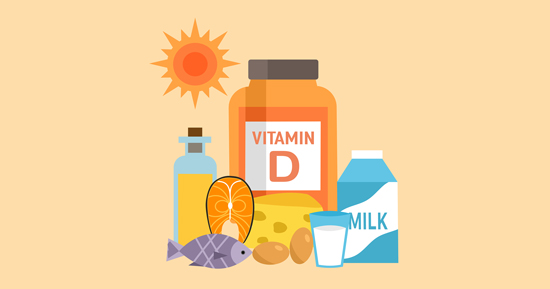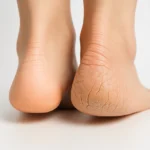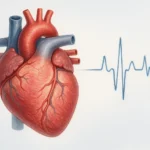
Signs of Vitamin D Deficiency in Adults: What Your Body Might Be Trying to Tell You
- Why Vitamin D Deficiency Is So Common (and Overlooked)
- Fatigue That Lingers, Even After Rest
- Subtle Mood Changes and the Vitamin D–Brain Link
- Aches and Pains You Can’t Quite Explain
- Interrupted Sleep and Shifts in Circadian Rhythm
- How Your Immune System Signals Low Vitamin D
- Interpreting Your Vitamin D Blood Levels
- Vitamin D and Frequent Urination: A Surprising Link
- Mood Swings, Anxiety, and Emotional Flatness
- Subtle Skin, Hair, and Nail Changes
- How Vitamin D Affects Calcium, Magnesium, and Bone Health
- Stages of Vitamin D Deficiency: From Mild to Severe
- How Vitamin D Influences Hormones and the Endocrine System
- When Tiredness Is More Than Just Fatigue
- Risks of Ignoring Vitamin D Deficiency
- Supporting Your Vitamin D Naturally and Safely
- FAQ – Answers to 15 Common Questions About Vitamin D Deficiency

Why Vitamin D Deficiency Is So Common (and Overlooked)
From my experience, the biggest reason people miss the signs is that they’re so easily confused with everyday fatigue or aging. I’ve worked with clients who had “normal” routines but never realized that sunscreen use, indoor jobs, darker skin tone, or even certain medications were blocking their vitamin D synthesis.
Some assumed their low mood or joint stiffness came from stress or overuse. Others believed their trouble sleeping was just part of getting older. But after bloodwork confirmed low vitamin D and we began restoring it, the difference in how they felt was dramatic.
What makes this deficiency tricky is that it doesn’t always scream. It whispers — in your bones, your muscles, your mood. And you have to listen closely to catch it early.
Fatigue That Lingers, Even After Rest
One of the first signs I often notice in clients with vitamin D deficiency is persistent fatigue. Not the kind that resolves with sleep, but the kind that lingers no matter how early you go to bed.
People describe it as a low-grade heaviness — like they’re moving through the day in slow motion. This isn’t about motivation; it’s about biochemistry. Vitamin D helps regulate energy at the cellular level, especially in muscles and the brain.
I’ve seen people regain vitality within weeks of correcting their levels — suddenly walking farther, thinking clearer, and feeling “like themselves” again. But the key is recognizing that this isn’t just laziness or burnout. It’s often your body running on a half-empty tank.

Subtle Mood Changes and the Vitamin D–Brain Link
There’s a strong and well-documented connection between vitamin D and mental health — and I’ve witnessed it repeatedly in real life. Clients have come in saying they feel flat, emotionally numb, or unusually irritable, only to discover their vitamin D was far below optimal.
This vitamin plays a crucial role in serotonin regulation — the very neurotransmitter that stabilizes mood. Low levels are also linked to increased risk of seasonal affective disorder, anxiety, and even mild depression.
What I’ve found is that people feel more like themselves again — mentally and emotionally — once their D levels are restored. Their spark returns. Not overnight, but in a quiet, lasting way. For those also struggling with issues like dry eyes, I’ve seen vitamin D support reduce systemic dryness as well how to treat dry eyes naturally
Aches and Pains You Can’t Quite Explain
This is one of the most overlooked signs I see in adults. Mild but persistent muscle aches, bone tenderness, or joint stiffness — especially in the lower back, hips, or thighs. Many people assume it’s posture, aging, or old injuries flaring up. But when we check their vitamin D levels, the connection becomes clear.
Vitamin D helps regulate calcium and phosphorus in the body, both of which are essential for muscle contraction and bone density. Without enough of it, you start to lose that structural integrity — slowly but steadily.
I’ve seen adults in their 30s and 40s improve achiness within a few weeks of correcting a deficiency. And in older clients, boosting D levels has often reduced the need for anti-inflammatory medications altogether.
Interrupted Sleep and Shifts in Circadian Rhythm
One of the most frustrating — and under-discussed — symptoms of vitamin D deficiency is poor sleep. I’ve had clients tell me they fall asleep fine but wake up repeatedly, or feel groggy even after what should be enough rest. Others describe restless legs, vivid dreams, or early morning anxiety they can’t explain.
Vitamin D plays a role in producing melatonin, the hormone that governs sleep-wake cycles. When levels drop, the body may struggle to stay in deep, restorative sleep. I’ve seen this especially in people who also spend little time outdoors or rely heavily on screens at night.
Once we support vitamin D levels naturally — through sunlight, supplements, or food sources — people often report calmer nights and more predictable sleep patterns. It’s not a sedative effect. It’s your body remembering how to rest again.

How Your Immune System Signals Low Vitamin D
Vitamin D isn’t just a bone nutrient — it’s also a critical immune regulator. In my work, I’ve seen people who were constantly catching colds, struggling with lingering infections, or dealing with chronic inflammation — all signs that the immune system was on edge.
What many don’t realize is that vitamin D helps activate certain white blood cells that detect and destroy pathogens. Without it, your immune system becomes sluggish and less responsive.
I once worked with a client who had three respiratory infections in four months. Her energy was low, her skin looked pale, and she felt run down. A quick blood test revealed extremely low vitamin D. Within two months of nutritional support and moderate sun exposure, her immune function rebounded — and she hasn’t been sick since.
Interpreting Your Vitamin D Blood Levels
| Blood Level (ng/mL) | Clinical Meaning | What I Recommend Based on Experience |
| Under 20 | Severe deficiency | Act quickly with guided supplementation |
| 21–30 | Insufficient | Increase sun exposure and high-D foods |
| 31–49 | Borderline adequate | Monitor and gently support consistently |
| 50–80 | Optimal for most adults | Maintain with lifestyle + food focus |
| Over 100 | Potential toxicity (rare) | Reduce supplementation, seek medical review |
This is the same table I use with clients during consultations. It helps bring clarity to an otherwise confusing range of numbers. While the “normal” threshold can vary by lab, in my experience, most adults feel their best when their levels sit between 50 and 70 ng/mL.
Vitamin D and Frequent Urination: A Surprising Link
While not widely discussed, I’ve found a subtle but real connection between low vitamin D levels and urinary changes — especially in older adults. A few clients reported increased frequency of urination, particularly at night, even without signs of infection or prostate trouble.
After reviewing their routines and test results, vitamin D kept appearing as a shared factor. It turns out that D plays a role in muscle function, including the smooth muscles of the bladder and pelvic floor. When deficient, these muscles may lose tone and responsiveness.
I’ve also read emerging research supporting what I’ve seen firsthand: restoring vitamin D can reduce symptoms of overactive bladder and improve nighttime control causes of frequent urination without pain

Mood Swings, Anxiety, and Emotional Flatness
One of the most common — and misunderstood — effects of vitamin D deficiency is its impact on emotional balance. I’ve worked with clients who described themselves as unusually irritable, reactive, or just emotionally “muted.” They weren’t depressed in the classic sense, but they didn’t feel like themselves.
Vitamin D interacts closely with brain chemistry. It supports serotonin production and helps regulate inflammation in the brain — both of which are tied to mental health. I’ve seen people begin to feel lighter, more resilient, and more emotionally flexible within just a few weeks of restoring their levels.
In fact, one of the biggest changes my clients report isn’t physical. It’s a return of optimism. When vitamin D is low, that internal brightness dims. When it rises, something inside them begins to wake up again.
Subtle Skin, Hair, and Nail Changes
The skin is often a mirror for what’s happening beneath the surface, and I’ve come to recognize certain changes that can hint at low vitamin D. For some people, the skin becomes unusually dry or flaky — even with good moisturizers. Others notice their nails becoming brittle or ridged, or hair that thins more than usual.
While many factors influence skin and hair health, vitamin D plays a role in cell renewal and immune balance. It helps the skin maintain its barrier and supports follicles in healthy growth cycles.
I recall one client in her 40s who came to me worried about sudden hair thinning. Blood tests showed her vitamin D had dipped well below optimal. Within two months of nutritional support and increased sunlight exposure, her hair and nails began to recover noticeably. These signs may not scream, but they whisper if you know what to listen for.
How Vitamin D Affects Calcium, Magnesium, and Bone Health
This is one of the core areas where vitamin D shows its importance. Without it, your body can’t absorb calcium properly — no matter how much you take in through food or supplements. Over time, this leads to weakened bones, muscle cramps, and even dental sensitivity.
I’ve seen clients with recurring leg cramps, jaw tension, or even unexplained tooth pain, all of which traced back to low vitamin D paired with imbalanced calcium and magnesium. Once we brought those minerals into harmony, symptoms often eased quickly.
What’s especially critical is the D-magnesium relationship. Without magnesium, vitamin D can’t be activated in the body. So I always recommend checking both — and balancing together when needed. It’s not just about bones. It’s about muscular coordination, energy metabolism, and cellular function.
Stages of Vitamin D Deficiency: From Mild to Severe
Over the years, I’ve seen a wide range of vitamin D deficiency — and the way it progresses. In early stages, people might just feel “off”: a little more tired, a little more sensitive to weather, or slightly irritable. At this point, most symptoms are subtle and reversible with simple support.
In moderate deficiency, things become more noticeable. Muscle aches increase. Sleep becomes more disrupted. Emotional resilience may weaken. I often see these cases when people hit their late 30s or 40s and assume it’s “just getting older.”
Severe deficiency is where real risks appear: bone thinning, repeated illness, mood crashes, even signs of autoimmune imbalance. Fortunately, I’ve also seen that with consistent support — sunlight, food, and the right supplements — people can rebuild their reserves and regain function, even after years of depletion.
How Vitamin D Influences Hormones and the Endocrine System
What many people don’t realize is that vitamin D functions more like a hormone than a traditional vitamin. I’ve worked with clients who had irregular menstrual cycles, signs of adrenal fatigue, or unexpected thyroid shifts — and in many of these cases, low vitamin D played a central role.
This nutrient interacts with nearly every cell in the endocrine system. It modulates how hormones are released, how receptors respond, and how the body maintains internal balance. I’ve even seen clients whose estrogen-progesterone balance improved after consistent D restoration.
What makes this important is how quietly the imbalance can creep in. You may not notice until energy, sleep, or libido start to falter. That’s why I always encourage routine blood testing — especially for women in perimenopause or people managing chronic stress.
When Tiredness Is More Than Just Fatigue
Fatigue is one of the most frequent complaints I hear — but not all tiredness is created equal. In clients with vitamin D deficiency, the fatigue often has a specific texture: it’s bone-deep, hard to shake, and doesn’t improve much with rest.
I remember working with a young teacher who thought she was just burned out. But bloodwork showed severely low D levels. Within weeks of targeted support, her stamina improved, and she described it as “getting her brain back.” That’s the kind of transformation I’ve seen again and again.
And while vitamin D is only part of the picture, it connects closely to other nutrients that influence energy. I often support clients with combinations of B12, magnesium, and adaptogens — alongside restoring D — to rebuild their energy systems holistically like in best vitamins for tiredness and lack of energy
Risks of Ignoring Vitamin D Deficiency
Some people go years without knowing their vitamin D is low — and unfortunately, the consequences can be serious. I’ve seen clients with advanced bone loss, chronic fatigue syndromes, or autoimmune issues where long-term D depletion was a contributing factor.
Low vitamin D can increase your risk for osteoporosis, fractures, type 2 diabetes, and even cardiovascular issues. It also plays a role in regulating inflammation, which means that chronic deficiency can quietly fuel systemic imbalances that don’t show up until later in life.
I’m not saying this to alarm you — but to empower you. Because when we catch it early and correct it consistently, the outlook is overwhelmingly positive. The body wants to heal. It just needs the right building blocks.
Supporting Your Vitamin D Naturally and Safely
In my practice, I always start with lifestyle first: time in natural sunlight, daily movement outdoors, and nourishing meals that include oily fish, egg yolks, mushrooms, and fortified dairy alternatives. These create the foundation.
Then, if needed, I add targeted supplementation — based on testing, not guesswork. I’ve seen the best results with D3 combined with K2, taken with a meal that includes fat. This supports both absorption and safety, especially over the long term.
What matters most is consistency. A few minutes of sun each day, some mindful eating, and seasonal adjustments are usually enough to maintain optimal levels for most people. That’s where the real magic happens — slow, quiet transformation over time.
FAQ – Answers to 15 Common Questions About Vitamin D Deficiency
Can I be vitamin D deficient even if I go outside often?
Yes. I’ve seen this with many clients. Factors like sunscreen, latitude, skin tone, and time of day all reduce your skin’s ability to produce vitamin D from sunlight.
What’s the best time of day to get sunlight for vitamin D?
In my experience, mid-morning to early afternoon is ideal. Just 10–20 minutes on exposed skin (without sunscreen) can make a big difference, depending on your skin type and location.
How long does it take to raise vitamin D levels?
It varies, but most clients I’ve worked with see noticeable improvement in 6 to 8 weeks with consistent supplementation and sun exposure.
Are supplements always necessary?
Not always. I’ve seen people maintain great levels through diet and sunlight alone — but for those with darker skin, limited sun, or absorption issues, supplements are often helpful.
What’s the safest form of vitamin D to take?
Vitamin D3 (cholecalciferol) is usually the most effective and best tolerated. I recommend pairing it with K2 for long-term bone and cardiovascular health.
Can too much vitamin D be harmful?
Yes, though it’s rare. I’ve only seen toxicity in clients who took high doses for long periods without monitoring. That’s why testing is so important.
What symptoms improve first when deficiency is corrected?
Fatigue, sleep quality, and mood are often the first to shift. Then, aches and immunity tend to follow within weeks.
Can vitamin D help with frequent urination?
It may help if the cause is related to muscular weakness or inflammation like in causes of frequent urination without pain
How does vitamin D affect dry skin or eyes?
I’ve seen low D linked to systemic dryness. Supporting it often improves skin moisture and sometimes even eye comfort how to treat dry eyes naturally
Should I take vitamin D in the morning or evening?
I typically suggest taking it in the morning with food. Some people find that nighttime dosing affects sleep.
Do I need magnesium to absorb vitamin D?
Yes — magnesium is essential for activating vitamin D. Without enough of it, you may not get the full benefit of your supplements.
Can vitamin D affect weight or appetite?
Sometimes. I’ve seen clients with low D report changes in hunger, metabolism, or cravings once levels normalize.
What blood test do I need?
You’ll want a “25-hydroxyvitamin D” blood test — that’s the most accurate marker of your current status.
Can I get enough from food alone?
It’s possible, but difficult. Most modern diets don’t include enough oily fish or organ meats. Sunlight still plays the biggest role.
How often should I test my vitamin D levels?
For most adults, I recommend testing once or twice per year — especially during seasonal changes or if you notice symptoms return.

















